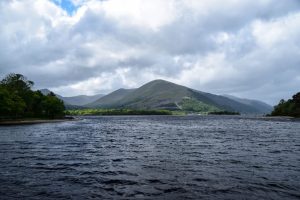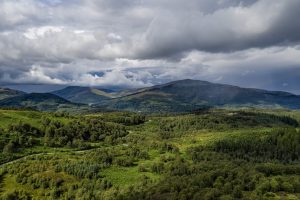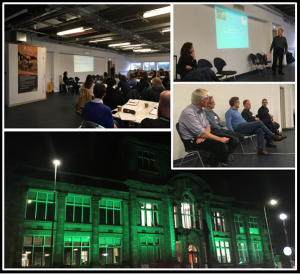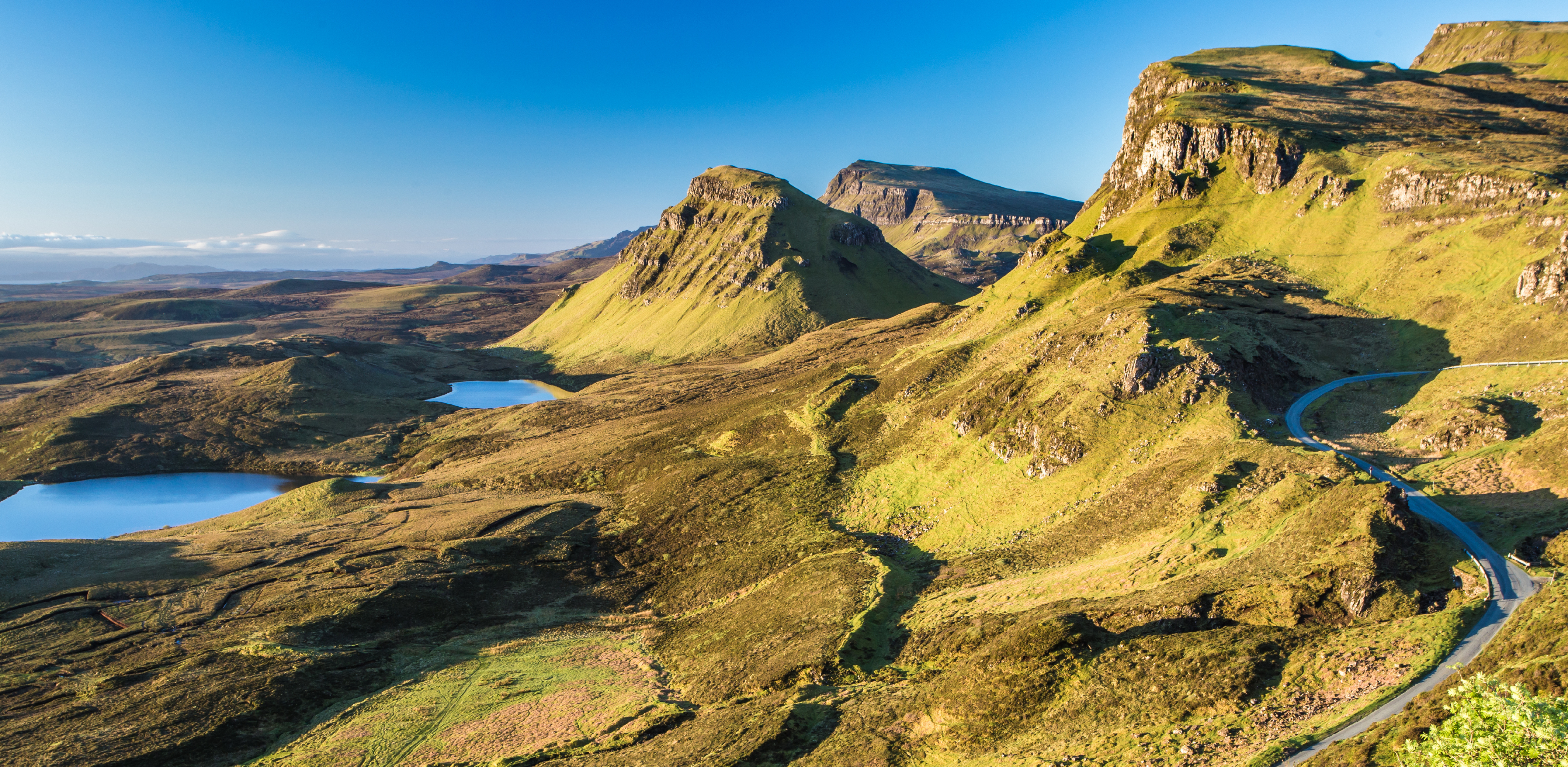Policy Debate on National Parks in Scotland
CIEEM co-hosted a ‘Pie and a Pint’ (PAAP) policy debate on National Parks with The British Ecological Society – Scottish Policy Group (BES-SPG) on October 6 2022.

The debate topic for this PAAP was National Parks, this following the outcome of the Scottish Government’s Bute House agreement in August 2021 to establish at least one new National Park in Scotland before the end of the current parliamentary session in 2026.
The evening followed the traditional PAAP format of a series of short talks from field experts, followed by group discussions to synthesise attendees’ thoughts on the debate in response to three proposed questions.

Annie Robinson, CIEEM Scotland Project Officer, opened the debate, noting the timely nature of the event given the launch of the National Park consultation that day. Annie also encouraged attendees to contact BES-SPG and CIEEM if they would like to be involved in the BES-SPG and CIEEM responses to the government consultation.
The evening’s five speakers then introduced the two current National Parks in Scotland (Loch Lomond and the Trossachs National Park, and the Cairngorms National Park), and provided an overview of many of the considerations in deciding on the location of the new park(s). The speakers also highlighted examples of regional bids for National Parks, including those in marine, montane, and urban areas.
Key points from the speakers:
- Key justification for designation of a National Park include, and are not limited to: protecting world class landscapes, supporting measures to address the climate emergency, protecting and extending ecosystem services, supporting health and wellbeing, tourism and stimulating rural development.
- National Parks may be selected for any/ all of their natural and cultural heritage features.
- The future of our national parks should be focused on the simple adage of the 2010 Lawton Report Making Space for Nature – Bigger / Better / More joined up.
- It is imperative that local communities have a central role in the creation of proposals, and that these communities remain involved at all stages of bids, including in the continued development of parks thereafter.
- The establishment of a statutory body, i.e. the National Park Authority, enables landscape-scale management to be enacted in a more efficient, effective, and consistent strategy than may be observed in the absence of such a body.
- The knowledge from existing National Park Authorities can be used to ensure an effective start for the new park(s).
- Ideally, the boundaries of future National Parks should align with the boundaries of other designations (e.g. RAMSAR and SPA boundaries) that may be present in an area to facilitate ease of management for landowners and practitioners.
- It is important to consider potential new areas for National Parks not just for what they are just now, but what they can become in the future.
- Join up to emerging financial support – Revere – a partnership between Palladium and the UK National Parks to catalyse private finance to restore the UK’s 15 National Parks –https://revere.eco/
- Speakers also celebrated the work by community-led groups in engaging individuals in the exploration and enjoyment of National Parks, such as the Glasgow-based group ‘Boots and Beards which works to engage and provide access to nature and the outdoors for all, particularly those from ethnic minorities and to provide opportunities for those from those communities to get involved: https://www.bootsandbeards.co.uk/
Summarised from the talks of Brian Eardley, the Biodiversity Team Policy Manager at the Scottish Government, John Mayhew (Director at The Association for the Protection of Rural Scotland), Chris Spray (Park Authority Board Member, Loch Lomond & The Trossachs National Park Authority), Dominic Hall (Convenor of the Glasgow National Park City), and Grant Moir (Chief Executive at the Cairngorms National Park Authority).

Clockwise from top left: Brian Eardley starts off the series of talks; John Mayhew delivers the second talk of the evening; The speaker panel take questions from the floor (left to right: Chris Spray, Dominic Hall, Grant Moir, John Mayhew and Brian Eardly); The event venue in Summerhall, Edinburgh.
Speakers and attendees then divided into smaller groups to discuss three questions:
- Going forward, what role should National Parks play in delivering national priorities for local communities and the biodiversity and climate crisis? What responsibilities and powers would they need to achieve these goals?
- What role should the National Park Authority play in delivering the National Park Plan? How might they better influence or direct other public bodies to achieve the required outcomes in the Plan?
- Where should we designate a new National Park and why?
The talks stimulated an outpouring of ideas, thoughts, and recommendations in the groups on the future of National Parks that continued well past the arrival of the event’s famous pies. Below is an overview of the responses to the above questions from attendees. Further detail can be viewed here.
Question 1: Going forward, what role should National Parks play in delivering national priorities for local communities and the biodiversity and climate crisis? What responsibilities and powers would they need to achieve these goals?
- We need to have coordinated strategies between both the legislation and bills across National Parks, as well as in the boundaries of differing land designations
- National Parks function most effectively when they are the product of partnerships between all concerned parties
- There need to be clear scales of priorities, i.e. Local? National? Global?
- Restoration, not just preservation, of the land inside National Parks should be a key outcome. Expectations of land remaining the same thus need to be managed.
- National Parks need to be exemplers of best practice
- Considerations of communities and their complexities – Who are the local communities and how are they engaged/served by the National Park?
Question 2: What role should the National Park Authority play in delivering the National Park Plan? How might they better influence or direct other public bodies to achieve the required outcomes in the Plan?
- It is crucial to balance both the potential negative and positive impacts of increased tourism, and the appearance of second homes and Airbnb’s in proposed areas for National Parks
- Current regulations on the exclusion of wind turbines inside National Parks may need to be reviewed given that the adoption of renewable energy is essential for meeting energy targets
- There needs to be effective trust-building between involved organisations and between the scale of stakeholders
- National Parks and their authorities require comprehensive accompanying legislation to be more effective
- Role of National Parks as trusted leaders and facilitators in partnerships and convening hub for landscape scale initiatives
- governance structures how do we ensure community voice and representation
- National Parks need power to trial new ideas
Question 3: Where should we designate a new National Park and why?
- There are clearly many areas of Scotland that would be very worthy of National Park status
- Considerations should include the promotion of landscape restoration, and what the area could become, not just what it is currently
- We need better data on how National Parks affect local biodiversity and tourism
- The placement of new National Parks should be based on issue-based decisions, as per the current two National Parks
- Size of the National Park and boundary considerations are very important
- Favour areas where there is ‘buy-in’
If this blog has whetted your appetite for conversation on National Parks and you would like to contribute to the BES-SPG and CIEEM responses to the consultation on National Parks you can contact Sarah sarah@britishecolgicialsociety.org and Annie annierobinson@cieem.net.
BES are currently planning future PAAP events for 2023, so watch this space to find out how you can participate in the next pie-based gathering of ecologists and ecologist-adjacent folk by signing up to their newsletter.
Visit CIEEM training and events pages to view upcoming events and sign up to the free weekly e-news.
